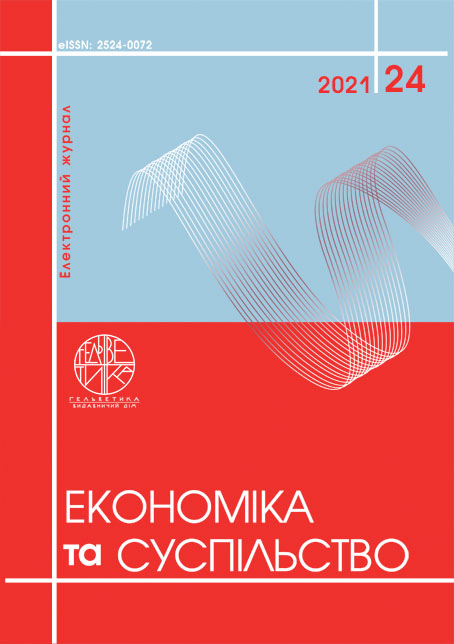EXAMPLES OF APPLICATION OF THE CERTAINTY EQUIVALENT METHOD TO THE INVESTMENT PROJECT EVALUATION
Abstract
Each company solves the problem of efficient use of financial resources by analyzing the investment attractiveness of various alternatives. For this, investment analysts often use traditional investment criteria, built on the principles of discounting future cash flows, given the riskiness of the relevant business line. Such methods of evaluating investment projects have proven themselves in cases where the financial system works efficiently, when the financial market is saturated with a variety of financial instruments that help businesses effectively manage risks and, if necessary, attract debt or partner financing. However, in a highly risky business environment, when there is no wide range of financial intermediaries in the financial market, when the financial market is incomplete, it is necessary to take into account the investor's attitude to risk, its financial condition and the characteristics of the existing portfolio of its businesses when evaluating investment projects. In such cases, the certainty equivalent method is used to evaluate risky investment projects. The certainty equivalent indicates the maximum amount that an investor is ready to invest in a given investment project, taking into account his attitude to risk, which is described with the help of his utility function of money. This work is devoted specifically to the demonstration of the application of the certainty equivalent method for evaluating investment projects, which are described using discrete and continuous random variables. The paper shows how, using numerical simulation methods, it is possible to find the certainty equivalent of investment projects under the assumption of high-risk investments, characterized by long and thick tails of the corresponding distributions. The proposed approach allows to integrate effectively new market and expert information, and it can be used to assess innovative business areas of high-tech companies, or to price investment products based on their ability to "mine" cryptocurrencies, such as bitcoin or ether. The method of assessing investment attractiveness using a certainty equivalent also allows the possibility of its integration with other investment methods, for example, the method of real options, and also makes it possible to apply sensitivity analysis to various influencing factors and Monte Carlo simulation analysis.
References
Von Neumann J., Morgenstern O. Theory of Games and Economic Behavior, Princeton University Press, Princeton. 1944.
Wilson R. Auctions of Shares, The Quarterly Journal of Economics, 1979, 93(4), рp. 675–689.
McCord M., Neufville R. ”Lottery Equivalents”: Reduction of the Certainty Effect Problem in Utility Assessment, Management Science, 1986, 32(1), pр. 56–60.
Zariphopoulou T. A solution approach to valuation with unhedgeable risks. Finance Stochast, 2001, 5, рp. 61–82.
Musiela M., Sokolova E., Zariphopoulou T. Indifference valuation in incomplete binomial models. Mathematics In Action 3.2, 2010, pр. 1–36.
Frittelli M. The minimal entropy martingale measure and the valuation problem in incomplete markets, Mathematical Finance, 2000, 10, рp. 39–52.
Henderson V. Utility indifference pricing – An overview, Indifference Pricing: Theory and Applications, R. Carmona (ed.), Princeton University Press, 2009, рp. 44–72.
Musiela M., Zariphopoulou T. An example of indifference prices under exponential preferences, Finance and Stochastics, 2004, 8, рp. 229–239.
Musiela M., Zariphopoulou T. A valuation algorithm for indifference pricing in incomplete markets, Finance and Stochastics, 2004, 8, p. 339–414.
Von Neumann J., Morgenstern O. (1944). Theory of Games and Economic Behavior, Princeton University Press, Princeton.
Wilson R. (1979). Auctions of Shares, The Quarterly Journal of Economics, 93(4), рp. 675–689.
McCord M., Neufville R. (1986). ”Lottery Equivalents”: Reduction of the Certainty Effect Problem in Utility Assessment, Management Science, 32(1), рp. 56–60.
Zariphopoulou T. (2001). A solution approach to valuation with unhedgeable risks. Finance Stochast, 5, pр. 61–82.
Musiela M., Sokolova E., Zariphopoulou T. (2010). Indifference valuation in incomplete binomial models. Mathematics In Action 3.2, рp. 1–36.
Frittelli M. (2000). The minimal entropy martingale measure and the valuation problem in incomplete markets, Mathematical Finance, 10, рp. 39–52.
Henderson V. (2009). Utility indifference pricing - An overview, Indifference Pricing: Theory and Applications, R. Carmona (ed.), Princeton University Press, pр. 44–72.
Musiela M., Zariphopoulou T. (2004). An example of indifference prices under exponential preferences, Finance and Stochastics, 8, рp. 229–239.
Musiela M., Zariphopoulou T. (2004). A valuation algorithm for indifference pricing in incomplete markets, Finance and Stochastics, 8, рp. 339–414.


